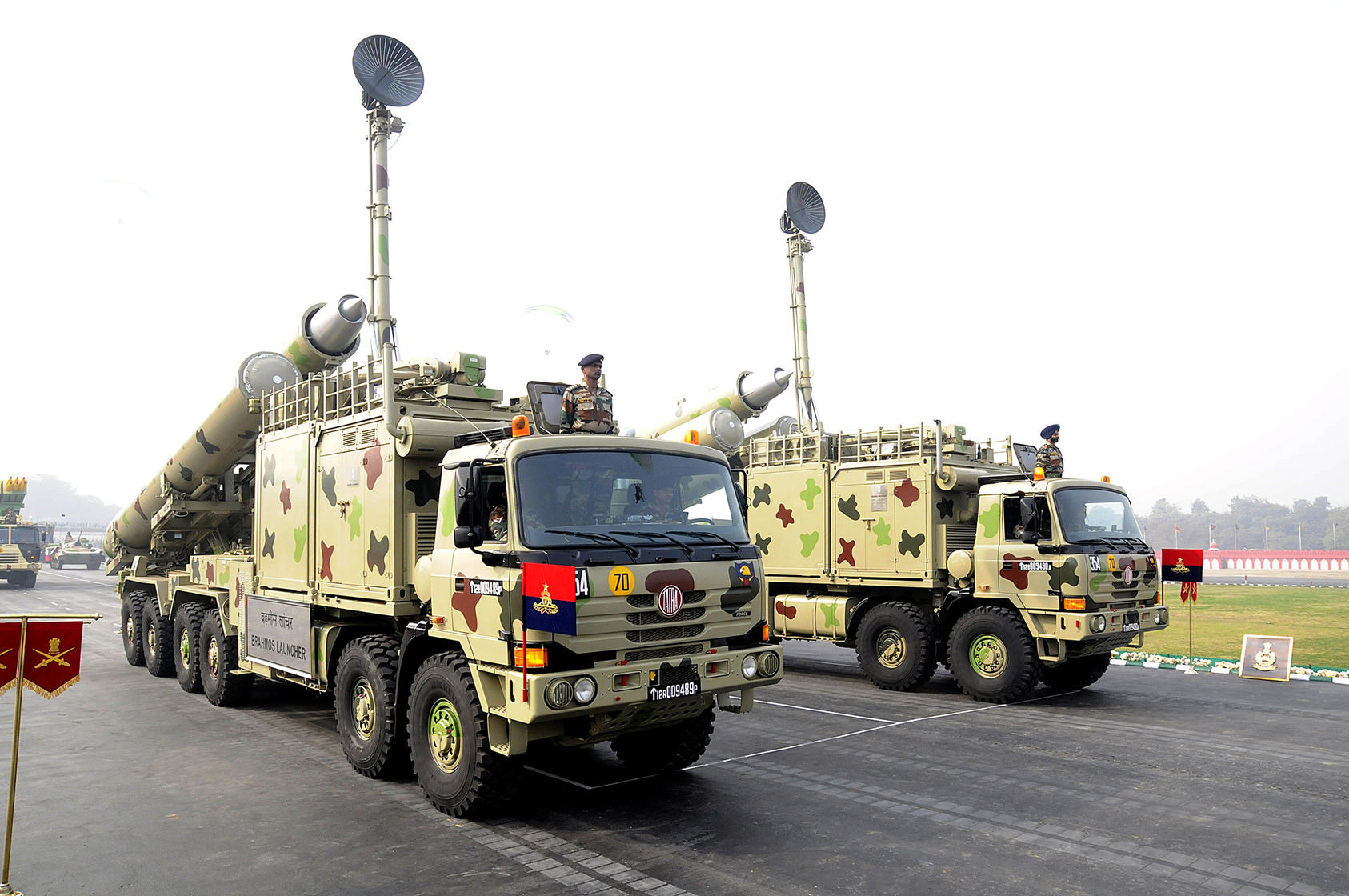
BRAHMOS Missile Launchers. (Wikicommons)
by Shah Khalid 4 December 2023
In the dynamic and fraught landscape of South Asia, the quest for strategic stability is confronted by an array of challenges, and India’s assertive policies emerge as a central player in this intricate geopolitical chessboard. As a region marked by the presence of nuclear-armed neighbors, any shift in the balance of power has far-reaching implications for peace and security. The intricate tapestry of historical conflicts, geopolitical ambitions, and modernization of military capabilities renders the pursuit of stability a complex and delicate endeavor.
At the heart of South Asia’s strategic instability lies the longstanding and contentious relationship between India and Pakistan. The historical animosities and territorial disputes, notably centered around the Kashmir issue, continue to be persistent sources of tension. India’s assertive policies, particularly in the context of Kashmir, have not only escalated bilateral conflicts but have also triggered military standoffs, bringing the two nuclear-armed nations to the brink of confrontation. The unresolved Kashmir dispute, fueled by India’s aggressive posture, remains a flashpoint that threatens the entire region’s stability.
A crucial factor contributing to the evolving dynamics of strategic stability is India’s robust military modernization and the expansion of its nuclear capabilities. The pursuit of technological advancements and an enhanced nuclear arsenal not only signals India’s intent to strengthen its security apparatus but also triggers reactions from neighboring states. The absence of comprehensive arms control agreements in South Asia exacerbates the situation, fostering an environment ripe for an arms race and increasing the risks of miscalculation and unintended escalation.
Moreover, India’s proactive engagement in strategic partnerships with major global powers adds an external dimension to the regional landscape. While such alliances may be driven by a desire to bolster India’s security and influence, they also introduce external complexities that reverberate across South Asia. The shifting alliances and global power dynamics inject an unpredictable element into the region’s strategic stability, influencing the calculus of regional actors and potentially altering the balance of power.
The nature of conflict is evolving, with non-traditional threats becoming increasingly prominent. India’s embrace of technological advancements and the digitization of warfare raises concerns about the militarization of cyberspace and the potential for hybrid warfare. The blurred lines between conventional and unconventional threats create a challenging environment, where the risk of conflict escalation is heightened. An aggressive policy stance in this context can exacerbate tensions, leading to unintended consequences in an interconnected and technologically driven landscape.
Addressing the multifaceted risks to strategic stability in South Asia necessitates a comprehensive and cooperative approach. Diplomatic initiatives, dialogue mechanisms, and confidence-building measures are indispensable tools for fostering an environment conducive to peace. Regional actors must engage in sustained and constructive dialogue, prioritizing conflict resolution mechanisms over confrontational postures.
International mediation also plays a critical role in mitigating tensions and facilitating resolution processes. The global community, recognizing the high stakes involved, should actively support initiatives aimed at promoting stability and averting potentially devastating consequences. South Asian nations can draw lessons from successful conflict resolution models globally and adapt them to their regional context.
In conclusion, the pursuit of strategic stability in South Asia is entangled in a web of historical conflicts, geopolitical complexities, and technological advancements. India’s assertive policies, while driven by national interests, contribute significantly to the challenges faced by the region. The path forward requires a commitment to dialogue, diplomatic engagement, and cooperative strategies. As South Asian nations navigate these complexities, the international community stands as a crucial partner in ensuring a stable and secure future for the region.
